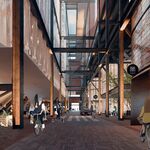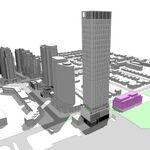^The fire truck debate is interesting, but I suspect it gets misused, especially when city bureaucrats get put on the defensive and are looking for a quick trump card to justify status quo in road standards.
Bear in mind that it’s a 15-year life cycle to replace the City’s fire fighting fleet, and when major fires happen the majority may be called upon….so until many vehicles are downsized, the rest will need to get through. This is not a two-year transition scenario.
A much bigger issue is the size of logistics and construction equipment, especially with the trend to upsize every home in the city. I regularly see enormous cranes and cement mixers on those downsizable local backstreets. Even the lumber and drywall deliveries are made by 18-wheelers.
And then there are Hydro trucks, forestry trucks, waterworks trucks…..
I’m not arguing against the change, I’m just observing that a downsized Fire Department won’t change much withoutother changes also..
- Paul




